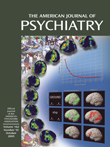Olanzapine Versus Ziprasidone: Results of a 28-Week Double-Blind Study in Patients With Schizophrenia
Abstract
OBJECTIVE: The efficacy and safety of olanzapine were compared with those of ziprasidone. METHOD: This was a multicenter randomized, double-blind, parallel-group, 28-week study of patients with schizophrenia. Patients were randomly assigned to treatment with 10–20 mg/day of olanzapine or 80–160 mg/day of ziprasidone. The primary efficacy measure was the Positive and Negative Syndrome Scale total score. Secondary efficacy and safety measures included Positive and Negative Syndrome Scale subscales as well as mood, quality of life, and extrapyramidal symptom scales. Safety was evaluated by recording treatment-emergent adverse events and measuring vital signs and weight. RESULTS: The study was completed by significantly more olanzapine-treated patients (165 of 277, 59.6%) than ziprasidone-treated patients (115 of 271, 42.4%). At 28 weeks, the olanzapine-treated patients showed significantly more improvement than the ziprasidone-treated patients on the Positive and Negative Syndrome Scale overall scale and all subscales and on the Clinical Global Impression ratings of severity of illness and improvement. The responder rate was higher for olanzapine than for ziprasidone. Extrapyramidal symptoms were not significantly different between groups in change-to-endpoint analyses, but results favored olanzapine on baseline-to-maximum changes. Weight change was significantly greater with olanzapine (mean=3.06 kg, SD=6.87) than with ziprasidone (mean=–1.12 kg, SD=4.70). Fasting lipid profiles were significantly superior in the ziprasidone group; there was no significant difference in fasting glucose level. CONCLUSIONS: Olanzapine treatment resulted in significantly greater psychopathology improvement and higher response and completion rates than ziprasidone treatment, while ziprasidone was superior for weight change and lipid profile.



